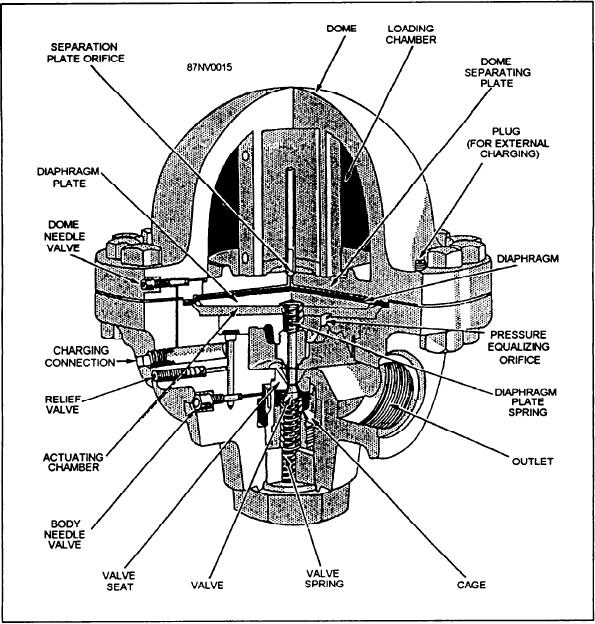The dome loading chamber is charged with air or
fluids, such as air, water, or oil (fig. 15-15). The other
other compressible gases (such as nitrogen) at a
type (not shown) regulates high-temperature fluids,
pressure equal to the desired reduced pressure. When
such as steam or hot water. The high-temperature fluid
the chamber is loaded and when the loading valve is
reducer is found only in older ships.
closed, the dome will retain its charge almost
Air-controlled regulators operate on the principle
indefinitely. When the regulator is in operation, the
that the pressure of an enclosed gas varies inversely to
trapped pressure within the dome passes into the
its volume. A reduction in volume results in an
actuating chamber through the small separation plate
immediate increase in pressure. Conversely, an increase
orifice. This pressure moves the large flexible
in volume results in an immediate decrease in pressure.
diaphragm, which forces the reverse-acting valve off its
A relatively small change in the large volume within the
seat. The pressure entering the regulator is then
dome loading chamber produces only a slight pressure
permitted to flow through the open valve into the
variation, while the slightest variation in the small
reduced pressure line. A large pressure equalizing
volume within the actuating chamber creates an
orifice transmits this pressure directly to the underside
enormous change in pressure. The restricting orifice
of the diaphragm. When the delivered pressure
connecting these two chambers governs the rate of
approximates the loading pressure in the dome and the
unbalanced forces equalize, the valve will close. With
one chamber to the other.
Figure 15-15.--Pneumatic-pressure-controlled reducing valve for low-temperature service.
15-14






